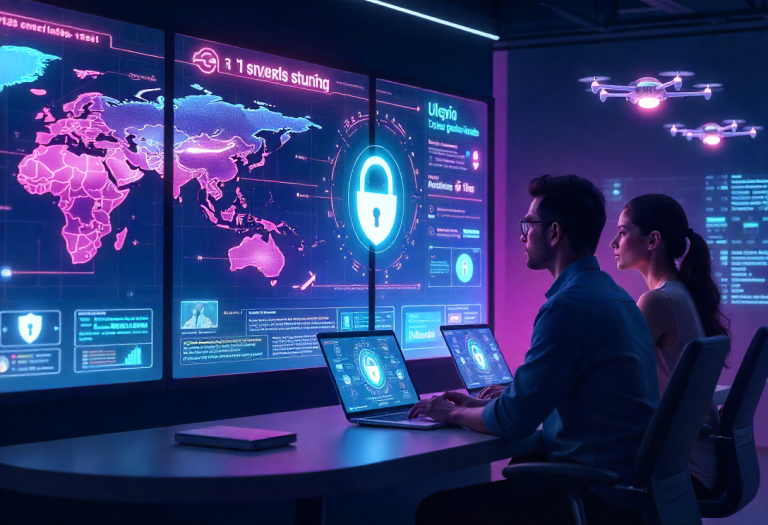In 2025, cybersecurity has become a critical concern for individuals and businesses alike. With the expansion of digital services, cloud computing, and IoT devices, cybercriminals are finding new ways to exploit vulnerabilities. Staying informed about the latest threats and best practices is vital to protect your data and privacy.
Here are the top cybersecurity threats you should be aware of — and how to guard against them.
1. AI-Powered Phishing Attacks
Cyber attackers are now using artificial intelligence to craft convincing phishing emails and messages that are harder to detect. These attacks can mimic trusted contacts or institutions, increasing the chances that victims will click malicious links or share sensitive data.
Protection tip: Always verify the sender’s identity, enable multi-factor authentication (MFA), and avoid clicking suspicious links.
2. Ransomware-as-a-Service
Ransomware attacks have evolved with “Ransomware-as-a-Service” platforms that enable even non-expert hackers to launch attacks by renting malware kits. Victims’ files are encrypted and held hostage until a ransom, often in cryptocurrency, is paid.
Protection tip: Keep regular offline backups, update software promptly, and use advanced endpoint protection.
3. IoT Device Vulnerabilities
The growing number of connected devices like smart home appliances, wearables, and industrial sensors increases the attack surface. Many IoT devices lack strong security features, making them prime targets.
Protection tip: Change default passwords, regularly update device firmware, and segment IoT devices on separate networks.
4. Cloud Misconfigurations
Misconfigured cloud storage and services remain a leading cause of data breaches. Accidental public exposure of sensitive data can occur if permissions are not set correctly.
Protection tip: Use cloud security monitoring tools, regularly audit permissions, and follow cloud provider best practices.
5. Deepfake and Identity Theft
Deepfake technology can create highly realistic fake videos or audio, which criminals use for fraud, misinformation, or social engineering.
Protection tip: Be cautious about sharing biometric data and use services to monitor your digital identity.
Conclusion:
Cybersecurity in 2025 is a shared responsibility. As threats become more sophisticated, vigilance and proactive security measures are essential. Educate yourself, keep systems updated, and leverage the latest security tools to stay one step ahead of cybercriminals.
